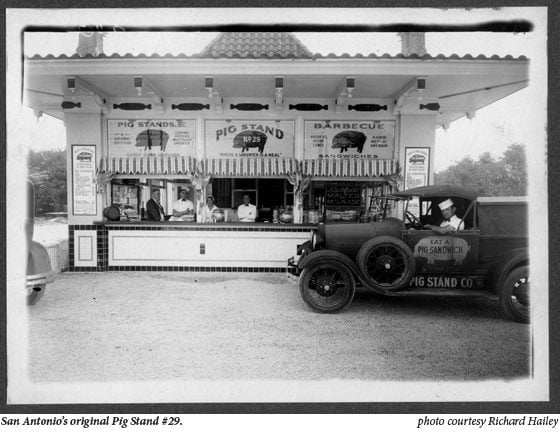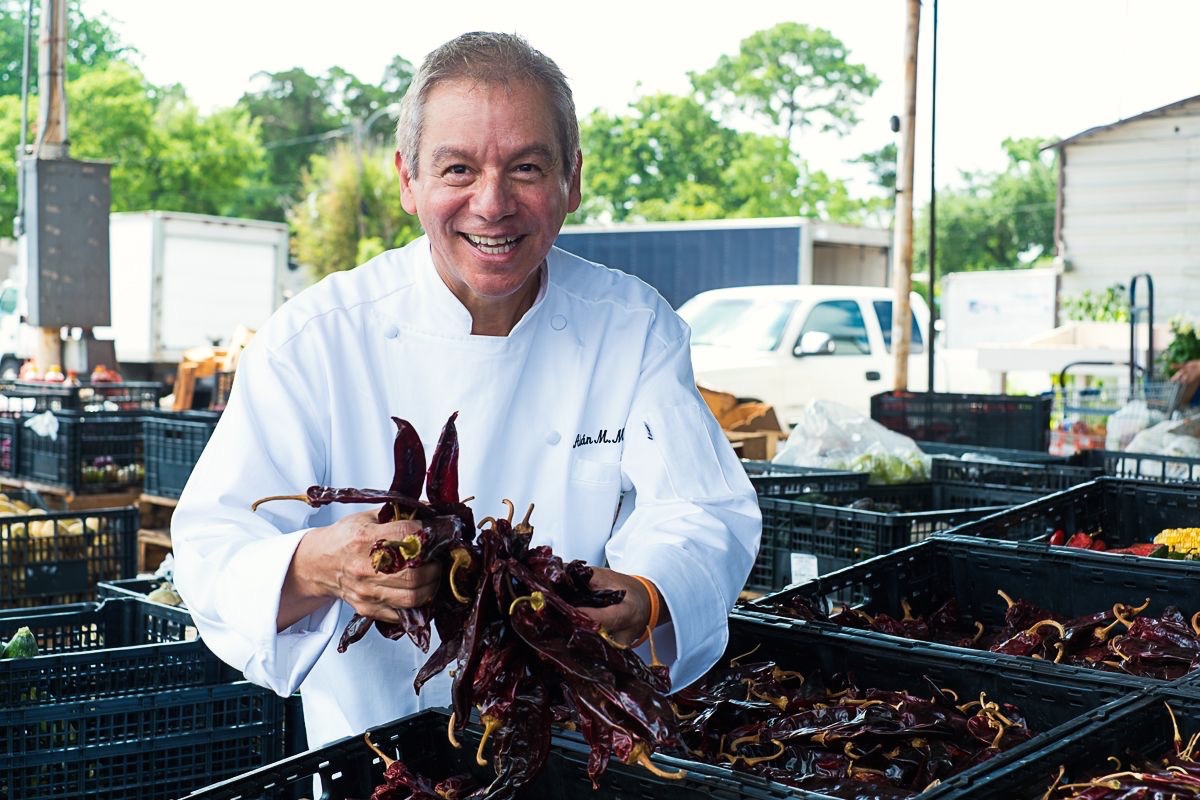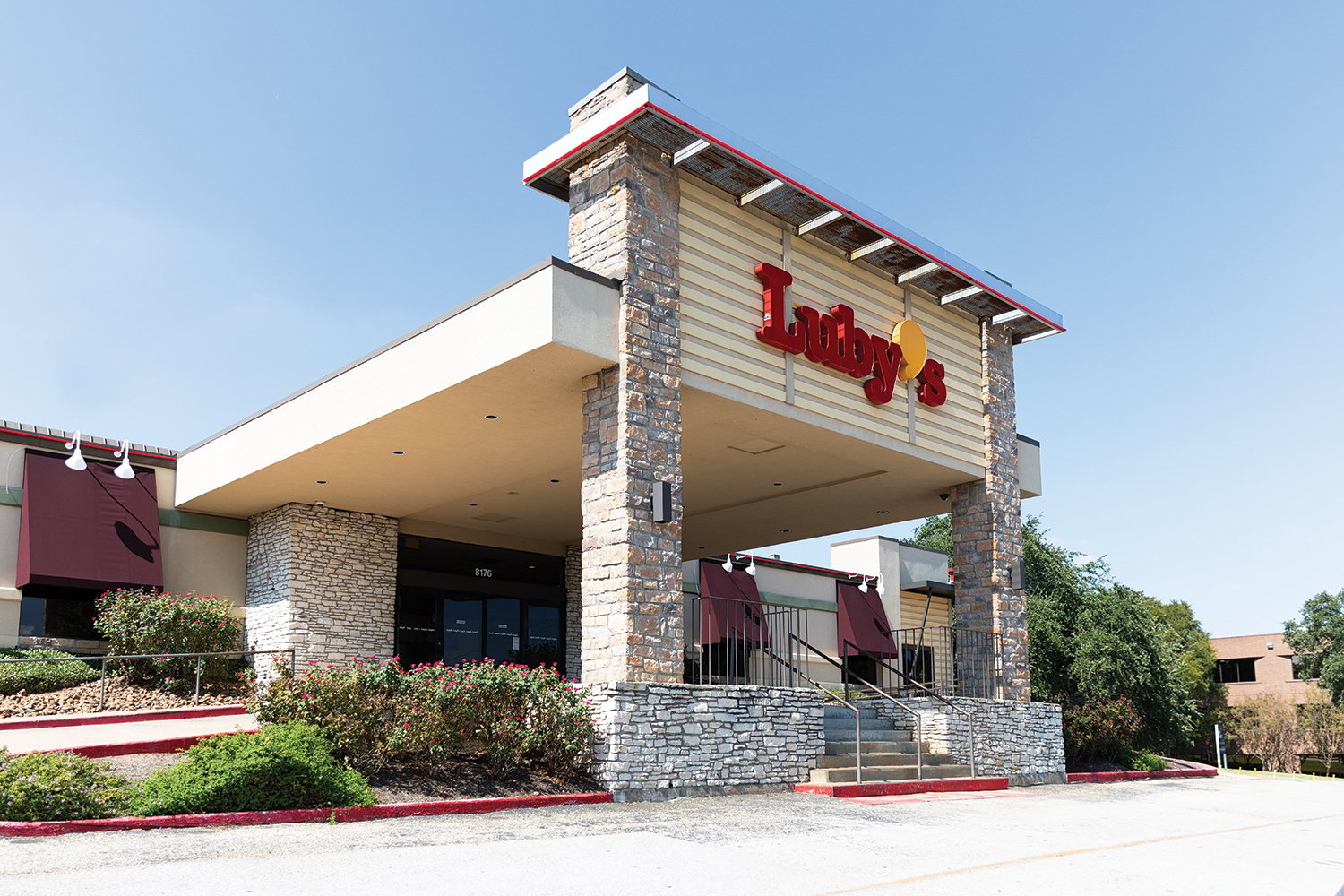
*
A boilerplate business news headline triggered my nostalgia trip: “Luby’s sheds more restaurants as sales decline in the third quarter,” the Houston Chronicle reported. The beloved cafeteria chain—my beloved cafeteria chain, Texas’ beloved cafeteria chain, the nation’s very first cafeteria chain—is beleaguered.
Restaurants are a hard business, or at least that’s the old industry wisdom bandied about by even the most casual diners like myself. And still, to hear of Luby’s suffering was a tough Jell-O cube to swallow. The Texas-based company was founded in 1947—well, actually, longer ago if you count the cafeterias of its progenitor, Harry Luby, but I’ll leave the arcane Texas history quibbles to the more obnoxiously knowledgeable of our readers. More than 70 years later, Luby’s remains an ever-present and comforting constant for many.
For me, it started young. I had a wonderful upbringing with two caring parents, but they both worked—a lot. Ours was a blue-collar household, and my mom usually cooked to save money. (We are fortunate that she is a spectacular home chef.) But even the best moms occasionally want someone else to do the dishes. When we ate out, my two favorite places were Marco’s, a Mexican restaurant in Meyer Park shopping center, near our home in Houston, and Luby’s, located in the same shopping center.
I inherited my love of cafeteria food from my mother. Old-school readers will be glad to know that she also frequented Wyatt’s and Picadilly, but Luby’s landed her heart.
Some of my earliest memories of eating out are my mom taking us to the cafeteria chain. I remember walking up to the rust-colored brick building and seeing the bright Luby’s sign in all its serif’ed glory, the big yellow apostrophe setting off the possessive ‘s.’ This restaurant belonged to someone—to a Luby—and it showed. My mom would hustle my brother and me ahead of her, each of us grabbing a tray, slick with hot water fresh from the dishwasher, before placing it on the railing in front of us. I’d order a LuAnn Platter, a dish so iconic it has eclipsed the Blue Plate Special in fame (prodded along by Mike Judge, the creator of the animated show King of the Hill, who named one of the program’s characters Luanne Platter). My protein, side, side, was fried fish, mac-and-cheese, and fried okra. Grab a yeast roll with the tongs. Pick up a red Jell-O from the dessert end. To drink? Iced tea with lemon.
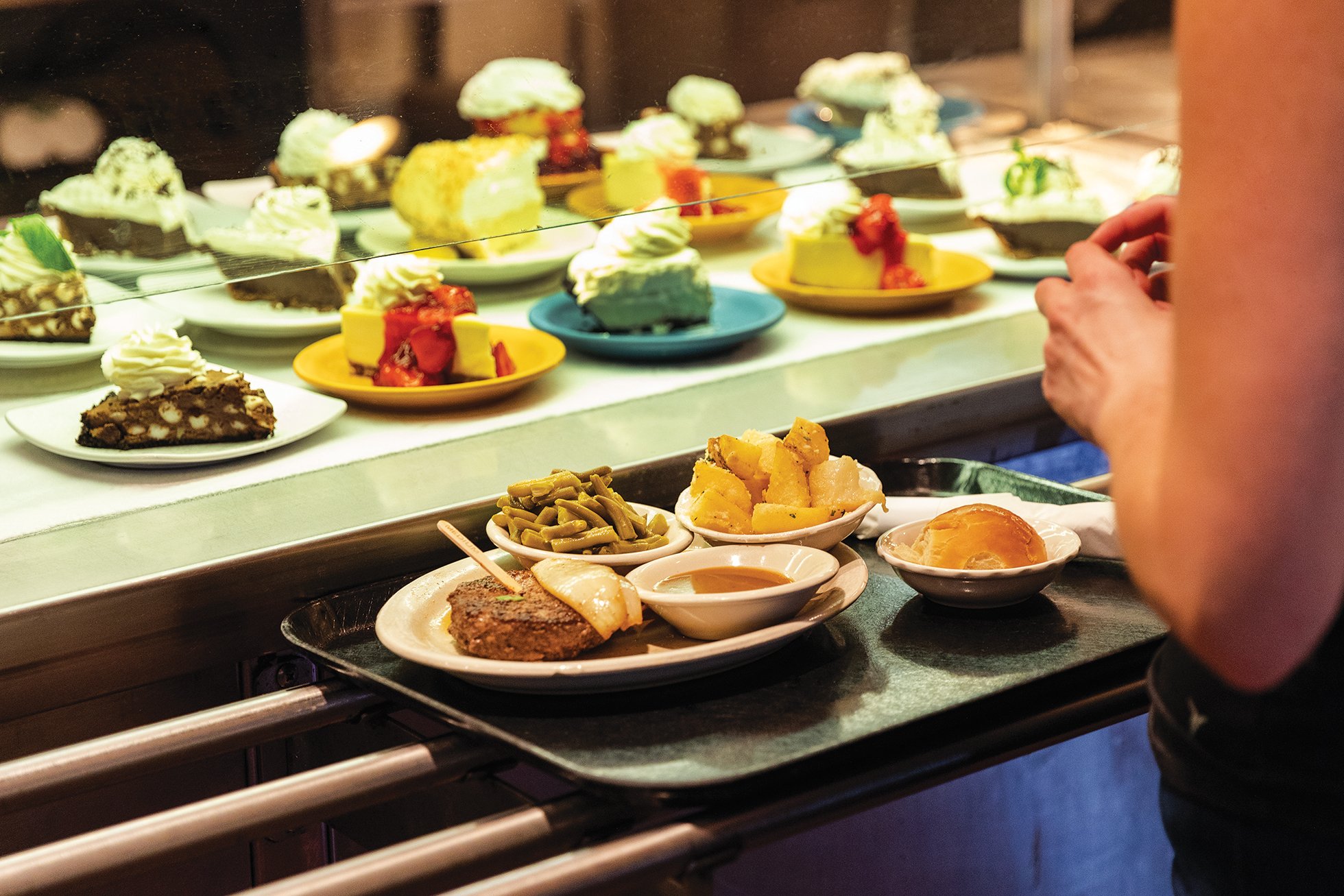
My mother (a liver-and-onions gal) could pay for three satisfying meals at a relatively low price, all while the atmosphere itself felt a little higher-rent. Luby’s had real cloth napkins, a deep Army green. The glassware was actually glass. The silverware felt hefty and substantive. And despite the restaurant being cafeteria style, “tea ladies” came around to refill beverages and inquire after your experience.
Eating at Luby’s never felt like a compromise. In fact, it was a great equalizer. This take is so universal that in the opening chapter of her 2006 book House of Plenty: The Rise, Fall, and Revival of Luby’s Cafeterias, co-author Carol Dawson writes that Luby’s “is the ‘equalizing’ place where rich and poor alike can go for a casual, satisfying meal.”
In an increasingly stratified society, fewer community tables exist. Many decry the loss of any democratizing institution and champion the few that remain. Given this perceived craving for something that is for one and for all, a place like Luby’s, steeped in history and goodwill, should be thriving. So what happened?
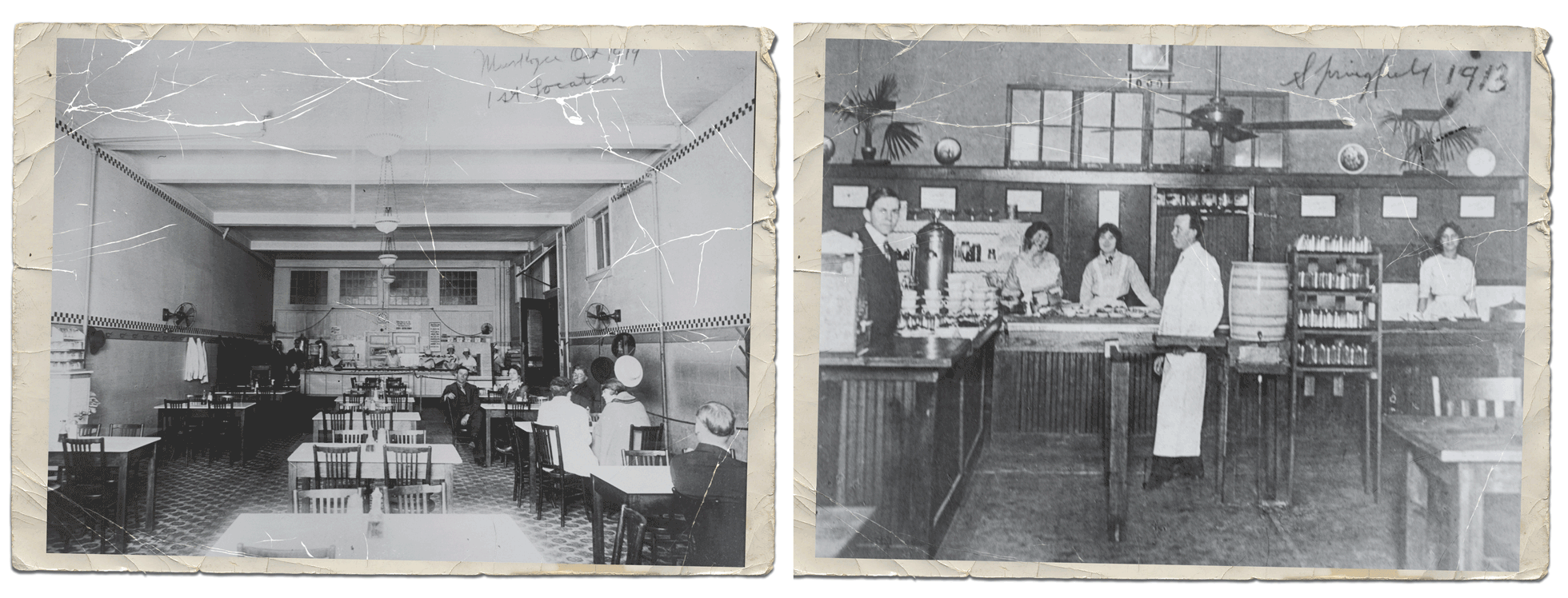
Over the past two years, Luby’s Inc. has closed nearly 40 restaurants. This figure deserves a little context. In the early 2010s, Luby’s Inc., a publicly held corporation, bought both Fuddruckers, a casual hamburger restaurant chain, and Cheeseburger in Paradise, another casual restaurant (inspired by the Jimmy Buffett song of the same name). But the cornerstone brand is suffering: The number of Luby’s restaurants has gone from 93 in August 2015 to 78 today. (For a scale of its decline, in 1996, there were about 200 locations in 11 states.)
This shrinkage is partly due to market forces. “There’s been a massive shift with the way that consumers engage with and use restaurants, period, the end,” says Robert Byrne, a senior manager of consumer insights at Technomic, a research and consulting firm for the food service industry. These winds of change kicked up about 15 years ago, he says, with the rise of the fast-casual restaurant chain (think: Chipotle). These places offer higher-quality ingredients and more complex flavor profiles while retaining a limited-service aspect where people generally serve themselves or order from a counter.
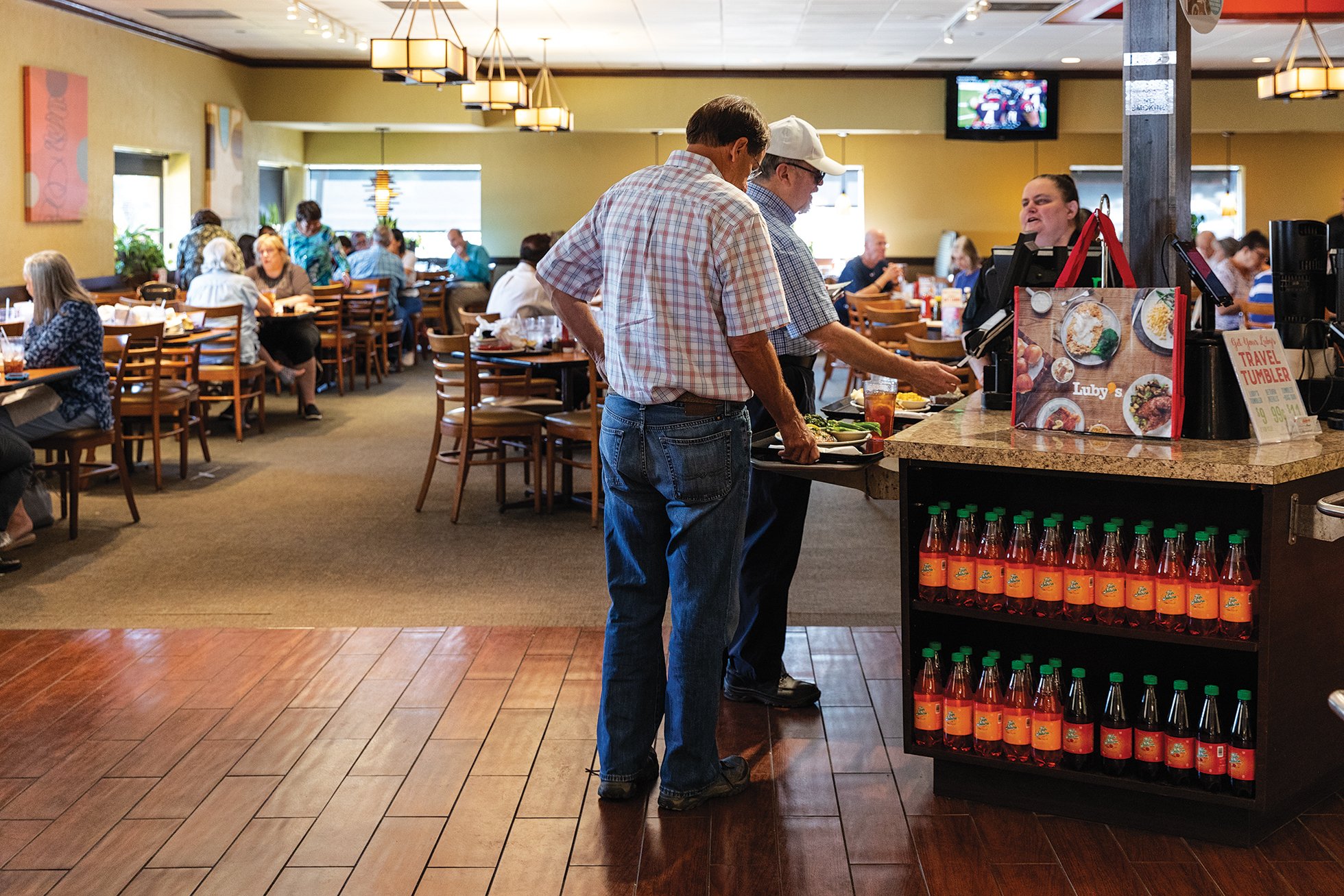
But Luby’s is arguably one of the original fast-casual restaurants. Where did it go wrong? The company made a misstep in 1997, when a new CEO and president took things in a different direction. As Dawson writes in House of Plenty, “The fresh food made ‘all from scratch’ to be served in the cafeterias was replaced with cheap, preservative-laden premade ingredients and frozen dishes. Many of the old recipes customers had loved for fifty years got jettisoned.”
“It was a huge mistake,” to change the food, Dawson says now, adding that this fateful decision was compounded by big changes in the industry. “This was also at a time of other kinds of fast-food restaurant expansions that challenged [Luby’s] way of doing things.” (In 2001, after Houston restaurateurs Chris and Harris Pappas became CEO and COO, respectively, they focused on food quality and freshness.)
Those complex market issues have only gotten thornier. Younger consumers, who, according to Byrne, are the most frequent diners at restaurants, are very in tune with all of the options they have—and they have more options than ever before. “There’s still appeal there, there’s still value there,” Byrne says of Luby’s, “but it isn’t the new and exciting thing.”
There’s a good-news-bad-news situation for Luby’s. The good news? Its most frequent diners actually happen to be younger ones, according to Byrne. The bad news? The share of people frequenting the chain more than once a month is shrinking year-over-year. The bad, bad news? “Traffic isn’t just an issue for Luby’s,” Byrne says. “The real issue of traffic remains the problem for all restaurants. There’s a move toward delivery that consumers seem to be demanding.”
What could Luby’s be doing to capture the ever-dwindling share of restaurant-goers? Well, they’re trying a few things. In September, Luby’s announced the formation of a “new Board Special Committee” that will establish “a strategic review process to identify, examine, and consider a range of strategic alternatives available to the Company with the objective of maximizing shareholder value.” One of the “strategic alternatives” in the offing is finding a buyer.
But until that moment comes, Luby’s is, like so many ailing businesses, pivoting to digital by running online ads that emphasize its “emotional connection” with customers. “We’ve discovered it and now we’re going to reinforce that connection through our digital channels. … We are making our brands relevant again and the growing response has shown we really do have loyal and passionate guests,” COO Todd Coutee said during a recent earnings call. Luby’s did not respond to a request for comment.
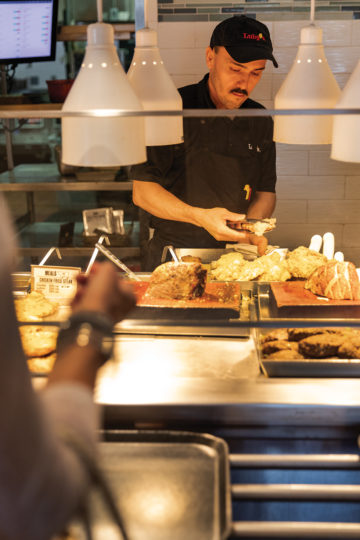
Messaging is important. “Frequently, it’s not so much what the brand is doing, but how are they communicating this to their potential customers,” Byrne says. But, he adds, “It has to be more than nostalgia.”
Byrne suggests Luby’s consider another strategy: “What are they doing to ensure they’re a top-of-mind option for the family occasion?” About 50 percent of millennials are parents, and millennial parents dine out more frequently than any other cohort that Byrne studies. “Millennial parents are probably not going to have the same disposable income that maybe previous generations have had, but … if Luby’s can position themselves in that way where they’re not just solving a problem, but making everybody feel good—with a kid-friendly environment and kid-friendly food—that’s a real opportunity. If you grew up going to Luby’s, it’s always going to have a place in your heart.”
There’s something to be said about a multigenerational, familial affair, one that cuts up, down, and across demographics. “It is still very much a melting pot,” Dawson says. “I do still observe that broad slice of demography when I go to Luby’s, which of course is one of the reasons why I like it. That original concept that Harry Luby began with is still an ethos there.”
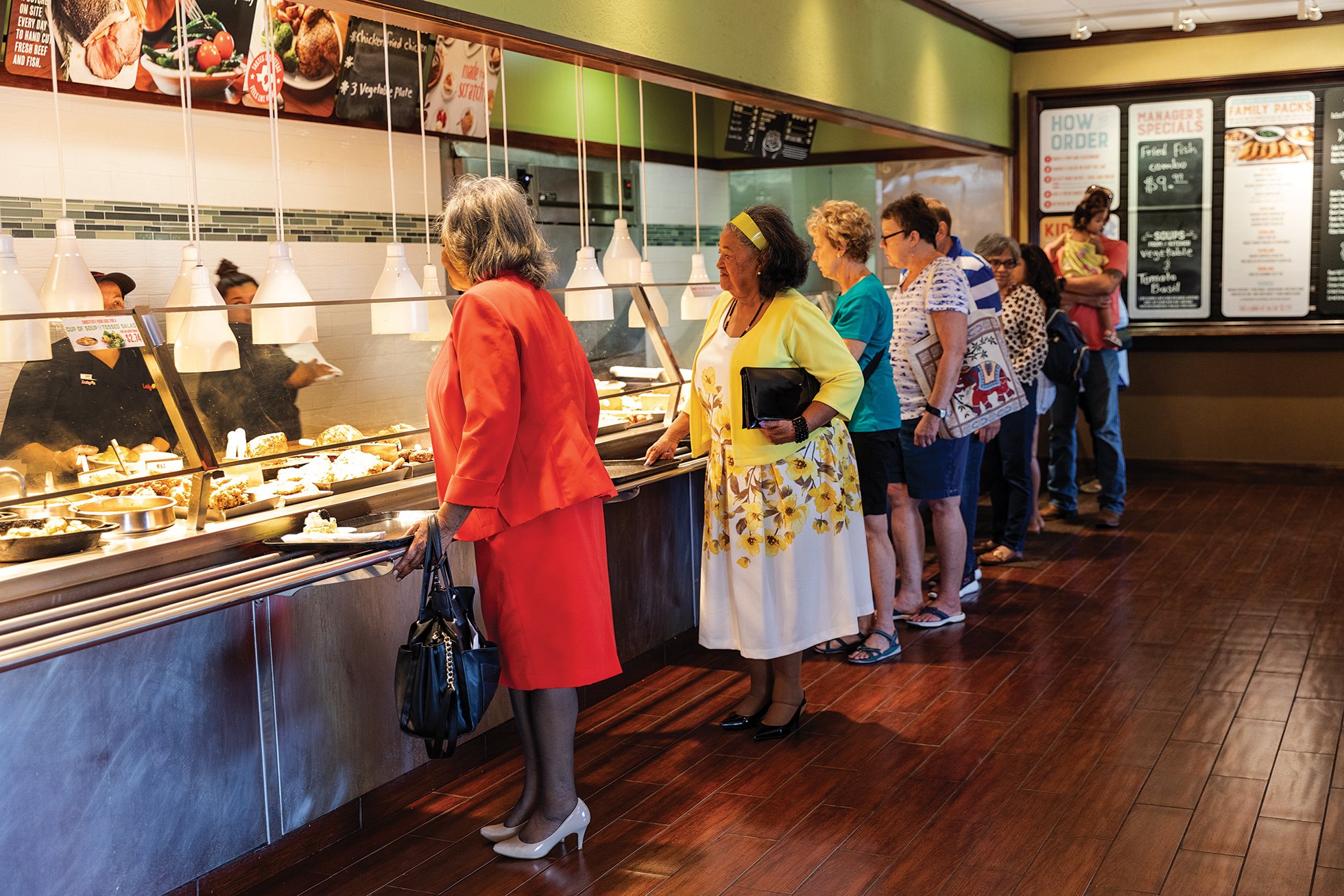
On a recent Wednesday, I ate lunch at my local Luby’s, the East Anderson Lane location in Austin. The entire ritual felt familiar, but there were some slight differences. No cloth napkins encasing the silverware; just a paper one wrapped around the fork, knife, and spoon. I slid my tray down the line, coveting so many of the brightly lit, steaming foods on display. I asked a server what she recommended, and she suggested the mushroom madeira, the day’s special. It reminded me of a passage out of Dawson’s book, where she wrote, “the creative use of leftovers was key to the success of the cafeteria.” The dish looked fresh and inviting and there was no real reason to suspect it was leftovers, but I defaulted to ordering my childhood favorites—fried fish, mac-and-cheese, fried okra. I added a cucumber salad, for intestinal health, and a chocolate icebox pie, for spiritual well-being. To drink? Iced tea. Served in a hard plastic cup.
The dining room was about half full. A few people were in ties (it was still too hot for suits) and business-casual wear. Some were on lunch breaks with colleagues. There was a smattering of lone diners like myself. Televisions mounted on the walls, a now-ubiquitous sighting at nearly every restaurant in the land, displayed sports news and other anodyne programming. As I unloaded my tray, a Luby’s employee—not a tea lady, but the approximation thereof—came by and collected it. She asked me if I needed anything, and left me with a polite nod and smile.
The food was fine. Pretty much how I remembered it. As I sat and ate my food, lost in my thoughts and my phone, I realized I couldn’t remember the last time I ate at a Luby’s. I texted my mom, asking her when she last visited one: “About three years ago.” I noted that this is why Luby’s might not be faring particularly well.
While I don’t mind dining alone, a solo trip to Luby’s felt like a wasted opportunity. I imagined myself returning, this time with my parents, my brother, my niece, my husband, a child I don’t have. I felt nostalgic for something I hadn’t lost. There’s still time to eat at Luby’s.
Correction: A previous version misstated the location of this Luby’s as being in Meyerland Plaza. The Observer regrets the error.
Read more from the Observer:
-
I’ve Lived in East Austin for 60 Years, and I Don’t Recognize it Anymore: As gentrification reshapes my neighborhood, I fear we’re losing something of real value to our city.
-
Driving My Life Away: As physicians leave small towns, rural Texans must travel farther and farther for health care.
-
John Cornyn’s Weaselly Immigration Record: How to say one thing and do another.
